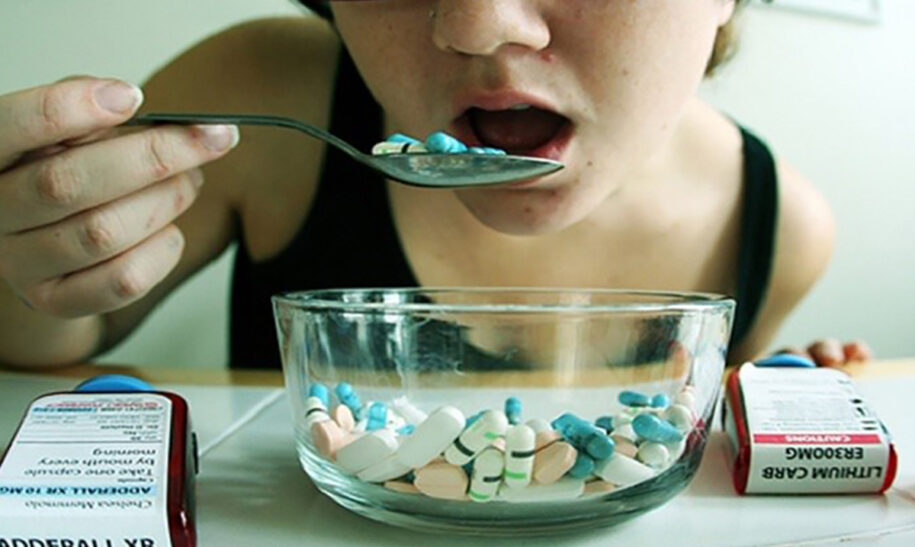How Big Pharma Gets Away With Selling Crystal Meth to Children By Renaming it Adderall
Attention deficit hyperactivity disorder is a commonly referred to psychiatric disorder that causes attention deficits, hyperactivity, or impulsiveness which is not behaviorally appropriate. However, most people do not realize that ADD and ADHD are not actual medical conditions? There are no brain scans, blood tests that identify or diagnose either of these “conditions” but doctors still use this excuse to prescribe schedule I or II drugs that have been scientifically determined as the equivalent of crystal methamphetamine.
Important Information You Must Know Before Giving Your Child ADHD Medication
According to Dr. Tasneem Bahtia:
“ADD and ADHD are the results of neurotransmitter and neuroendocrine imbalances. The four main imbalances include high norepinephrine and cortisol, dopamine dysfunction, serotonin deficiency, and insulin irregularity. Each of these imbalances is rooted in nutritional deficiencies that with correction, improve symptoms of hyperactivity and inattention. Food allergies and intolerances also contribute to malabsorption of nutrients.”
Controversies surrounding ADHD have existed since the 1970s. Many experts have posed questions about the existence of ADHD, as well as the treatments commonly used alongside a diagnoses for the disorder.
Other concerns have arisen including the possible overdiagnosis, misdiagnoses of ADHD leading to undertreatment of other possible psychiatric disorders. The American Journal of Psychiatry has stated concerns of the increased severity of schizophrenia and bipolar disorder in those who have a history of stimulant use for ADHD in childhood. Furthermore, stimulant drugs have not been approved for children 2-6 years of age. Despite these concerns, .51%-1.23% of children in this age range are currently being treated with these stimulant drugs in the US.
Shockingly enough the National Institute of Mental Health has stated that “under medical supervision, stimulant medications are considered safe”, and based on this, they recommend stimulant treatment for ADHD. In February 2006, the FDA recommended warning labels acknowledging cardiovascular risks associated with stimulant medications prescribed to treat ADHD. Currently, stimulants are classified as a Schedule II controlled substance in the US.
Drug abuse and addiction expert Carl Hart recently stated on MSNBC that “There isn’t much difference between the demonized street drug methamphetamine (known as crystal meth) and the prescription drug Adderall.”
Stimulants for Treatment of ADHD
Typically prescribed stimulant drugs include Ritalin (methylphenidate), and Adderall (a mixture of dextroamphetamine and amphetamine). These treatments are quite dangerous and come with detrimental side effects to the mind.
• According to scientific research funded by the FDA and the National Institute of Mental Health, drugs such as Ritalin increase the risk of sudden death by five hundred percent among children and teens.
• Ritalin treatment has many side effects: Abdominal Upset, stomach pain, nausea, vomiting, loss of appetite and weight loss. Emotional and Behavioral Side Effects, nervousness, excitability, emotional ups and downs, insomnia and dizziness, headaches, irritability, crankiness, crying, emotional sensitivity, muscle tics or twitches, and nervous habits.
The cake topper? Ritalin is known to be addictive in many patients. Withdrawal symptoms include fatigue, depression, disturbed sleep patterns, malnutrition, and cardiovascular complication leading to stroke or death.
Adderall prescription has increased from 1.3 million in 1996 to nearly 6 million in 1999. Adderall is a combination of amphetamine and dextroamphetamine. Amphetamine and dextroamphetamine can be habit-forming.
Typical Side Effects Include:
Nervousness, restlessness, difficulty falling asleep or staying asleep, uncontrollable shaking of a part of the body, headache, changes in sex drive or ability, dry mouth, stomach pain, nausea, vomiting, diarrhea, constipation, loss of appetite, weight loss.
NIH recommends anyone who experiences any of these symptoms should call their doctor immediately:
Fast or pounding heartbeat, shortness of breath, chest pain, excessive tiredness, slow or difficult speech, dizziness or faintness, weakness or numbness of an arm or leg, seizures, motor tics or verbal tics, believing things that are not true, feeling unusually suspicious of others, hallucinating (seeing things or hearing voices that do not exist), mania (frenzied or abnormally excited mood), aggressive or hostile behavior, changes in vision or blurred, vision, fever, blistering or peeling skin, rash, hives, itching, swelling of the eyes, face, tongue, or throat, difficulty breathing or swallowing, and hoarseness.
Sadly, most people have no idea of the similarities that exist between stimulant ADHD treatments and the street drug referred to as meth. Both substances are considered as high risk controlled substances, and both substances are composed of the same chemical breakdown. Furthermore, the side effects on the mind, body, and soul are detrimental for both drugs as well. We must maintain our education and awareness of what we put in the bodies of our children…..especially when the drug pushers are profiting immensely with no repercussion.


